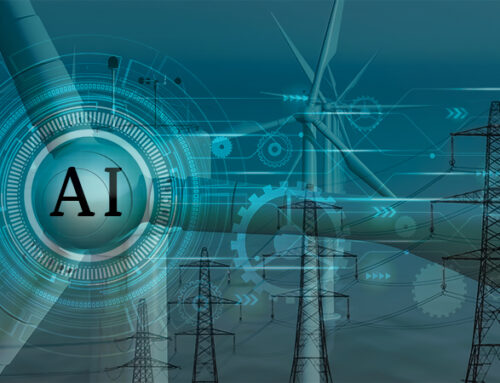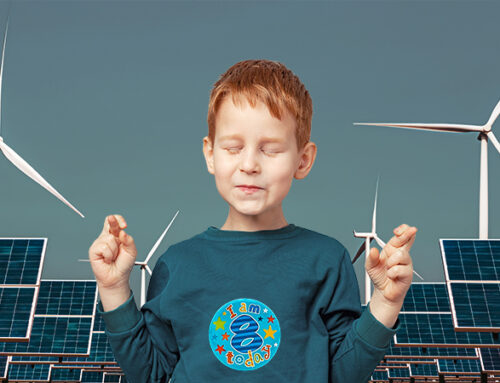The energy sector is undergoing a period of significant change with the rapid emergence and adoption of renewable technologies, notably solar PV and wind. Developments in storage promise significant disruptions in the medium term, alongside smart grids, and by the mid 2020s we could see new generation nuclear technologies and tidal power adding to the mix.
But innovation doesn’t end there. In this post I explore a handful of scientific developments and interesting inventions ranging from potentially game changing breakthroughs to rather more niche ideas.
The bionic leaf
In 2011, MIT scientist Daniel Nocera developed a pioneering bionic leaf. Now at Harvard, Nocera and his colleague Pamela Silver have further developed the process of artificial photosynthesis making liquid fuel from sunlight, carbon dioxide and water. Their process, described in the June 16 issue of Science, achieves an efficiency of 10%, which compares very favourably with natural photosynthesis which is only about 1% efficient.
 The system uses a pair of electrodes, a photoanode and a photocathode, separated by a membrane, to split water into hydrogen and oxygen. The hydrogen, along with carbon dioxide, is fed to a specially bio-engineed bacterium, which coverts them into liquid fuels. The photoanode is made of gallium arsenide, which absorbs light very well but can oxidise when exposed to water. To avoid this, the anode is protected by a layer of titanium dioxide, with a layer of nickel on top to act as a catalyst.
The system uses a pair of electrodes, a photoanode and a photocathode, separated by a membrane, to split water into hydrogen and oxygen. The hydrogen, along with carbon dioxide, is fed to a specially bio-engineed bacterium, which coverts them into liquid fuels. The photoanode is made of gallium arsenide, which absorbs light very well but can oxidise when exposed to water. To avoid this, the anode is protected by a layer of titanium dioxide, with a layer of nickel on top to act as a catalyst.
When exposed to sunlight, the photoanode oxideses water molecules, generating oxygen as well as protons and electrons, which pass through the membrane and are recombined by the photocathode to form hydrogen. The system is fully integrated, with no wiring, and is made of elements which are all abundant in nature, meaning it should be affordable. Unfortunately the device isn’t yet stable, suffering some degradation with use, but the team believes these problems can be resolved.
A number of other teams are also working on artificial photosysnthesis, using a variety of approaches. Start-ups Joule Unlimited and LanzaTech are developing systems to produce biofuels from carbon dioxide and hydrogen using bacteria that consume carbon monoxide or carbon dioxide rather than hydrogen.
The Joule SolarConverter® modular array would typically encompass 1,000 acres, with each module containing tailored catalysts, water and micronutrients. Waste carbon dioxide is pumped in, keeping the catalysts in motion, and maximising their exposure to sunlight to drive photosynthesis. Charged from the sunlight, the catalysts consume the CO2 and continuously produce fuel or chemical molecules into a liquid medium. The medium circulates through a separator that filters the end product. The process occurs continuously for numerous weeks before the module is flushed and reinoculated on a staggered basis.
LanzaTech’s process involves biological conversion of carbon through “gas fermentation”, which uses a proprietary microbe rather than the sugars used in traditional fermentation, to transform carbon-rich waste gases into useful liquid commodities. LanzaTech’s microbe is a naturally-occurring organism in the family of acetogens, or gas-fermenting organisms which utilise only gases for their entire life cycle.
The Joint Centre for Artificial Photosynthesis is working on an approach that uses inorganic catalysts instead of bacteria to convert hydrogen and carbon dioxide to liquid fuel.

These processes are years away from commercialisation, but the benefits are large, so more development can be expected.
Energy from algae
Production of biofuels from algae would avoid the competition with food issues faced by traditional biofuels, and therefore have attracted a fair amount of interest. A 2013 paper in Bioresource Technology reported that algae-based fuels have the potential to cut carbon dioxide emissions by 50 – 70%. They are also more efficient than other biofuel – the US Department of Energy believes algae could produce up to 60 times more fuel per acre than land-based plants.
Algae are marine organisms that, like plants, produce energy from carbon dioxide and sunlight. Single-celled microalgae can be used to produce fats which can be converted into biodiesel, the most common form of biofuel.
However, despite showing early promise in the laboratory, companies have struggled to achieve decent productivity at larger scales. Algal biofarms are very large as algae require a large surface area to be exposed to sunlight. The algae also need to be continually stirred, which uses a lot of energy, significantly reducing the efficiency of the plant. There are also issues with contamination from predators. There is some way to go before the costs can be reduced to the US$ 3/gallon needed for algae-fuels to be competitive with crude oil.
A review of the state-of-play for biofuels from algae in 2015 identified dozens of start-ups focused on the field, but noted:
“The papers present quite a mixed picture of the prospects of algal fuels: on the negative side, resource requirements may be debilitating and energy gains may be questionable. On the positive side, oil production may be sustainable, renewable and affordable. In terms of life-cycle assessment algal fuels may be better than fossil fuels, but there are no clear answers in this emerging field. Notwithstanding the conflicting views, the concept of biofuels from algae is conceptually fundamentally sound. Despite the existing poorly developed production methods, algal fuels achieve a net positive energy recovery, but how much exactly, remains contentious. Water footprint of algal biodiesel appears to be smaller than the water footprints of biodiesel from other crops.”
Algae have a number of characteristics which may enable these challenges to be overcome. Firstly, algae grows very quickly, being able to double in number in just an hour. Algae also has a wide range of potential uses apart from energy including dietary supplements, bioplastics and other high-value chemicals, so capturing by-products could generate additional income streams improving the overall economics.
| Researchers are seeking ways to improve the efficiency of algae. Scientists at the University of Pennsylvania and the NASA Ames Research Centre in California are studying the unique way in which giant clams harvest energy from algae in nutrition-poor waters. Materials called iridocytes, which give giant clams their iridescent colouring, scatter light into the symbiotic zooxanthallae algae living within the clams’ tissues. These algae are arranged vertically, with a layer of iridocytes on top. The way the iridocytes scatter light to the algae, allows the algae to structure in ways which optimises the limited space in the clam. |  |
Taking a different approach, scientists from Concordia University in Canada have powered an innovative energy cell using an electrical charge from the photosynthesis of cyanobacteria, microorganisms that make up blue-green algae. Their system, described in the June & September 2015 issue of Technology, consists of an anode, cathode and proton exchange membrane. The algae are placed in the anode chamber, and as they undergo photosynthesis, they release electrons onto the cathode surface, which can then be utilised by loads attached to the cell. Therefore, this method involves the direct extraction of electrical energy from photosynthesis by blue-green algae, rather than from conversion of the algae to a biofuel.
While the use of algae in energy production has so far failed to deliver on its early promise, ongoing developments suggest it’s too early to close this particular book just yet.
People power – energy from footsteps
A natural energy generation process of a completely different type has been pioneered by UK company Pavegen. Pavegen’s process harnesses the people power through an under-foot fly-wheel system designed to capture the kinetic energy of human footsteps, converting it to electricity through electromagnetic induction. The latest generation of the product, the V3, is triangular, with a generator in each corner. This means that wherever you stand on the tile, electricity is generated (in previous square versions it was necessary to stand on the centre of the tile).
The V3 generated 5W energy whenever it is activated. This may seem modest, but the product is targeted at low-energy applications. At the 2013 Paris Marathon, Pavegen laid down a 25 metre strip of a previous generation of the product and generated 4.7 kWh energy, enough to run an LED light for a month. The company has installed its system in over 100 locations globally, including airports, railway stations, shops and offices. The system can also provide data allowing consumer footfalls to be accurately measured, allowing retail spaces to be optimised.
Dutch firm Energy Floors has developed a similar concept, beginning its idea on the dancefloors of Rotterdam.

In collaboration with Shell, Pavegen installed its system underneath an outdoor football pitch in Rio de Janeiro. Together with solar panels and batteries, the system provides the energy to power the floodlights, enabling the pitch to be used after dark. This is currently the largest Pavegen installation worldwide, consisting of 200 tiles in 10 rows of 20. The pitch was built in 2014 and opened by Pele.
The concept is interesting in that it matches supply with demand, for example by providing lighting when and where people need it. The challenge is to deliver enough energy to make it worthwhile in terms of materials and installation costs. Many of Pavegen’s installations are very small, eg 10 tiles installed at Canary Wharf, but each generation of the technology seems to improve on the last, so it may well be that this unique concept finds its place in the urban energy toolkit.
People power – energy from play
Building on the football theme, New York based Uncharted Play has developed SOCCKET, an energy generating football, that stores electricity produced during play for later use. Inside the ball is a pendulum that drives a motor which charges a lithium ion battery inside the device. According to its inventors, the ball stores enough energy after just half an hour of play to run an LED lamp for 3 hours. The company has also developed PULSE, a skipping rope that works on the same basis.

While to most of us this may seem like an interesting novelty, it can make a major impact on the lives of children in developing nations. Many rural households in less-developed areas reply on kerosene lamps for lighting. Such lamps have relatively low luminosity, give off harmful fumes, and present a serious fire risk. The SOCCKET and PULSE devices can be charged by children during their lunchtime breaks and provide enough power to illuminate their homework.

The company has gone on to develop MORE (Motion-based Off-grid Renewable Energy), a customisable micro-generator that can be incorporated into any device that moves, harnessing kinetic energy and converting it into electrical energy.
SOCCKET suffered from early reliability and durability issues, which the company hopes to have addressed in its second generation product. Hopefully they are right as this concept has the potential to transform lives of children in developing areas.
People power – personal transport
To most people, green personal transport means bicycles, but to some it has always had the potential to mean much more. Most of us remember the hype and disappointment around the Sinclair C5, a small one-person electrically assisted pedal cycle. Launched in London in January 1985, the C5 had an innovative polypropylene body and chassis designed by Lotus, however the limited battery life, maximum speed of 15 mph, and lack of waterproofing (hardly ideal in London in January!) meant it never took off and became a notorious flop. (Interestingly, it later became a cult collectible, with units changing hands for £5,000, far above the initial retail price of £399!)
Since then, electric vehicles have entered the mainstream, and there have been a number of attempts to develop personal vehicles for example the BMW C1 enclosed scooter. Californian company LitMotors is developing its own C-1, an electric 2-wheel car designed for one (and a bit) people.

Which brings us to the Elf from Organic Transit, another electrically assisted pedal cycle, but this time with a roof and solar panels. The Elf can achieve 20 mph with electrical assistance, and 30 mph with pedalling, and will charge fully in 2.5 hours when connected to a standard power outlet. The motor has a range of 48 miles without pedalling.

The Elf is in many ways the realisation of Clive Sinclair’s dream, having a degree of practicality that the C5 lacked, and arriving in an era of greater environmental awareness. Sir Clive meanwhile, continues to invent, and has recently launched a handheld version of his iconic ZX Spectrum computer.
These inventions and innovations are all very different, but share one important characteristic: they all seek to derive energy from smarter means than just setting fire to stuff, turning to Nature to gain inspiration for the next generation of clean and sustainable energy sources.






Leave A Comment